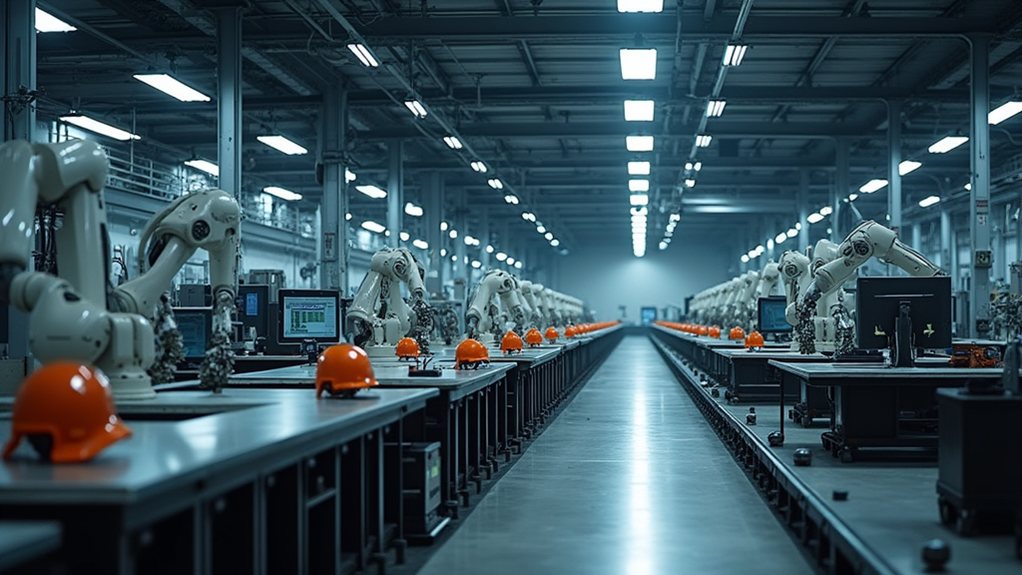To secure your job against AI displacement, develop AI literacy and focus on skills AI struggles with: creativity, complex human interaction, and problem-solving. Rather than competing against algorithms, learn to collaborate with them. Younger workers (especially 18-24) face higher anxiety, but continuous learning and side projects provide protection. Tech workers earn more despite higher risk—$13.30/hour more than less exposed roles. The entrepreneurial path might just be your robot-proof ticket forward.
The robots aren’t just coming—they’re already in the building, and they’re eyeing your desk. With a staggering 300 million jobs potentially at risk by 2030, the AI revolution isn’t some distant science fiction plot. It’s the sequel that’s already streaming, and you might be cast as the expendable character.
Certain sectors are getting hit harder than a browser with too many tabs open. Manufacturing jobs are vanishing faster than donuts at a Monday meeting, with 2 million expected to disappear by 2025. Finance professionals aren’t faring much better—turns out algorithms don’t need coffee breaks or bonuses to crunch numbers.
Even HR departments are seeing pink slips, as IBM demonstrated by replacing 8,000 employees with AI agents who never complain about birthday cake protocols. This growing trend has caused approximately 65% of employees to experience anxiety about their job security in the face of advancing AI technologies. Despite their efficiency, these systems often perpetuate human biases that exist in their training data, potentially leading to discriminatory hiring practices.
The displacement pattern isn’t exactly democratic. If you’re young (18-24), you’re 129% more likely to be worried about AI stealing your job than your soon-to-retire colleagues. Urban workers in tech-heavy regions face higher risks, while those in developing economies might have a temporary reprieve—only 26% of jobs in low-income countries are currently exposed.
AI job anxiety skews young and urban, while developing economies enjoy a temporary algorithmic immunity—for now.
Companies aren’t just trimming headcount; they’re eliminating entire functions. The tech sector alone is averaging 491 job losses per day. That “workforce optimization” memo? It’s corporate-speak for “the algorithm does your job now, minus the dental benefits.”
But before you trade your desk chair for a sandwich board declaring the end times, there are strategies to avoid becoming professionally obsolete. Jobs requiring creativity, complex human interaction, and problem-solving remain relatively safe havens. Your economic position may depend on adaptation, as workers in AI-exposed jobs earn $13.3 more per hour than those in least exposed positions.
Developing AI literacy—understanding how to work with these systems rather than compete against them—is increasingly essential. Side projects, entrepreneurship, and continuous learning aren’t just resume fluff anymore; they’re professional life preservers.
Consider smaller, nimble organizations where innovation creates new roles faster than AI eliminates old ones. The future belongs to those who can befriend the robot at the next desk—or better yet, program it.









